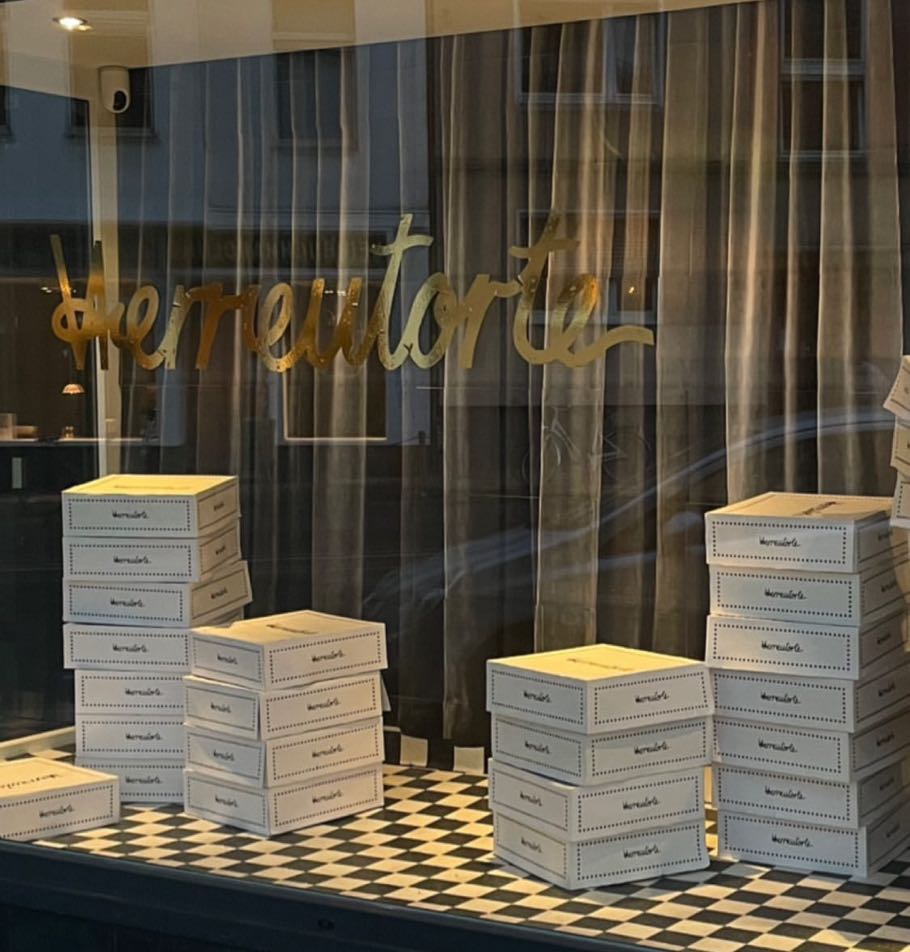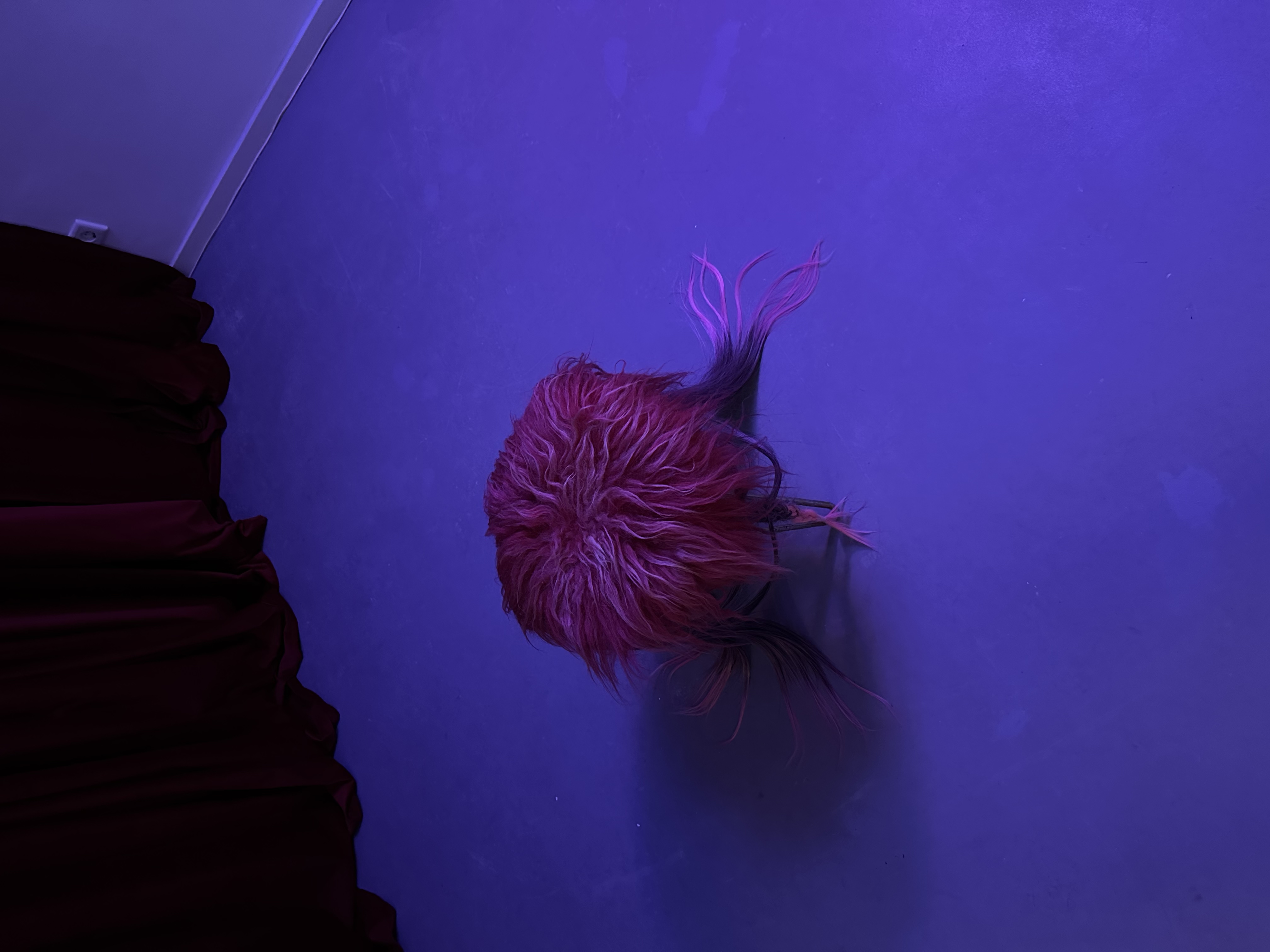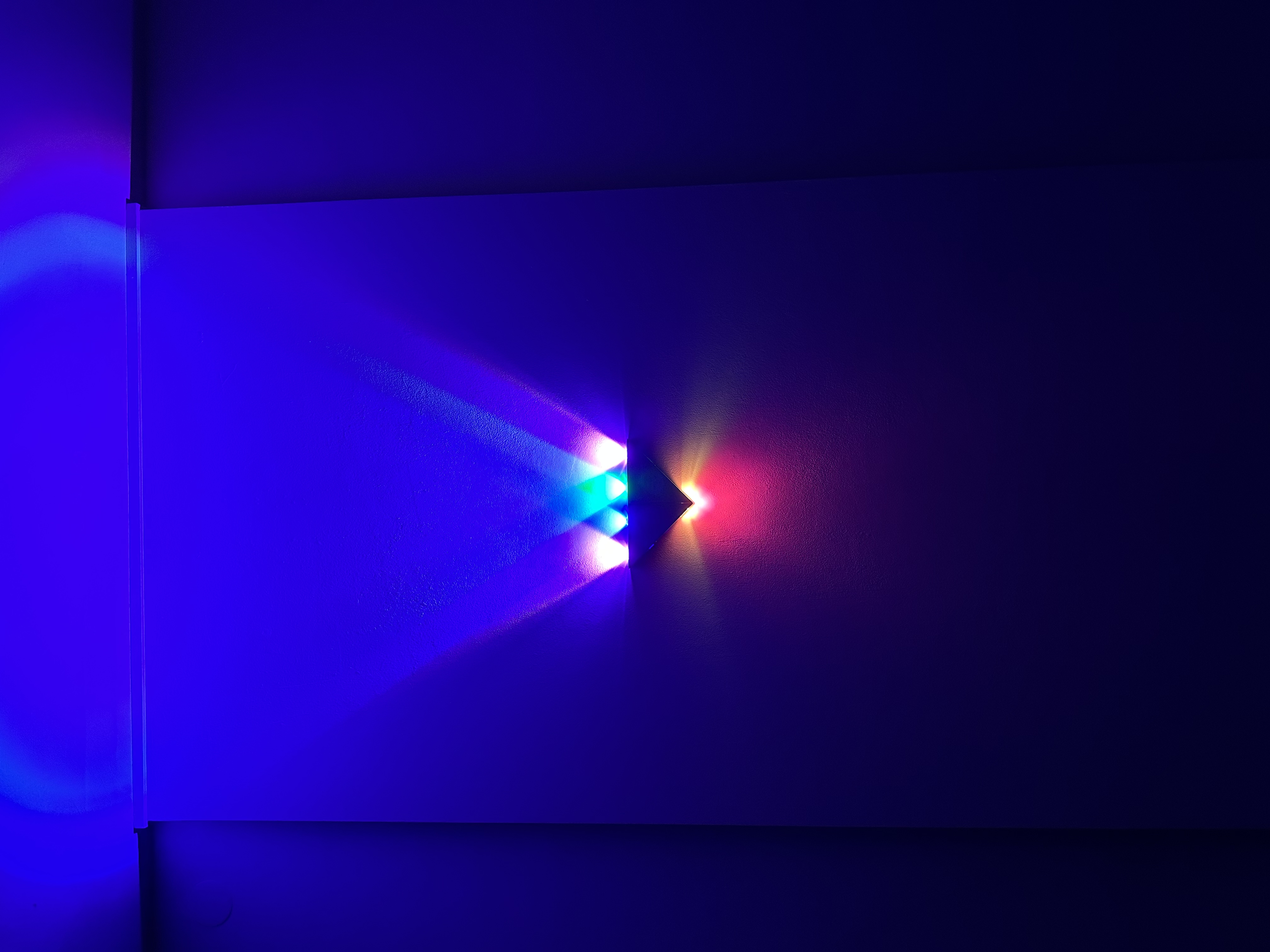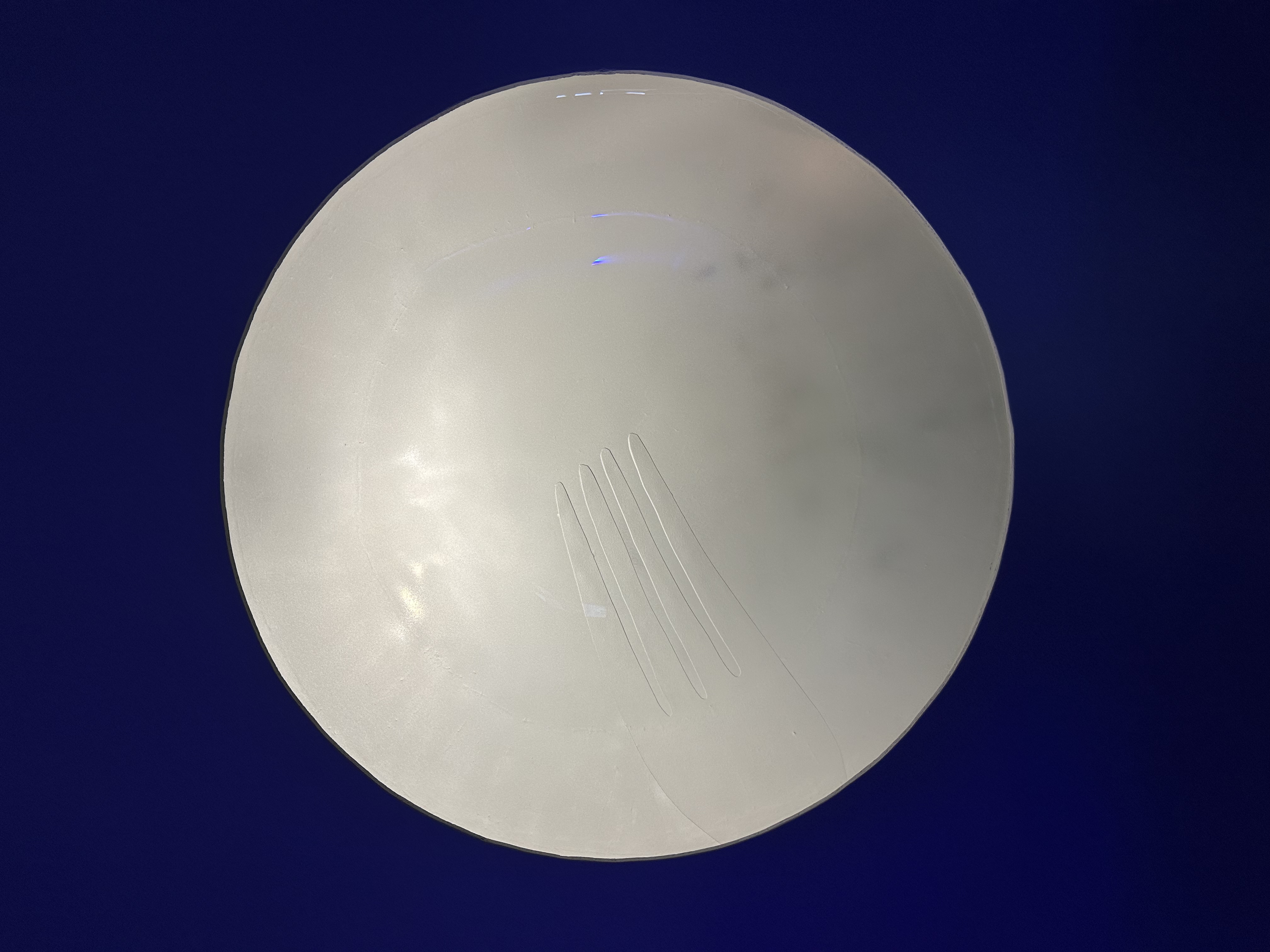Herrentorte
Fabien Friese&Martin Malala&Matthias Theis
![]()
Fabien Friese&Martin Malala&Matthias Theis

Herrentorte follows a narrative towards a fictitious person and their fragmented memories. Manifesting into physical form, they tell of social gatherings, as well as moments of introversion, unveiling in parts an idea as to who this person might be.
The interior hides behind a kind of store display reminiscent of renowned Düsseldorf café Heinemann. Eerily frozen into place, the very showcases seemingly empty cake boxes propped against the printed visual of a floor to ceiling curtain. While referencing bourgeois fantasies ingrained into this café-going culture, this appropriative mirage of the very fantasy veils its intestines from an outside.
When crossing inside, one is met with the echo of uninhabited karaoke tunes coloring an image of a deserted gathering. Like strays of a party long past, only a handful of guests remain:
Fabian Friese’s erste schwule Nacht draws inspiration from encountering gay nightlife as a youthful observer, replicating the lamps of a bar in Cologne. Notably, the lamp‘s triangular shape evokes the emblematic pink triangle embraced by the gay men‘s movements from the 1970s onward, symbolizing both queer advocacy and pride. Originally employed as a nefarious emblem by the Nazis, the pink triangle was a means of branding homosexual men within concentration camps and correctional facilities. Braiding together memories of childhood, Martin Malalla’s Gnom I and Gnom II resonate of playing with Barbie doll hair and maturing this mode of care work into interest for interior design.
A spotlight looming over the scene enables a desire for being staged, while simultaneously becoming an aggressor, singling out whoever is in focus. Matthias Theis’ Untitled (Panoptikum) reminisces of wishing for discretion in moments of exposure and contemplates how a sit-down dinner can be- come uneasy to those secretly subjected by the table
![]()
![]()
![]()
![]()
![]()
![]()
The interior hides behind a kind of store display reminiscent of renowned Düsseldorf café Heinemann. Eerily frozen into place, the very showcases seemingly empty cake boxes propped against the printed visual of a floor to ceiling curtain. While referencing bourgeois fantasies ingrained into this café-going culture, this appropriative mirage of the very fantasy veils its intestines from an outside.
When crossing inside, one is met with the echo of uninhabited karaoke tunes coloring an image of a deserted gathering. Like strays of a party long past, only a handful of guests remain:
Fabian Friese’s erste schwule Nacht draws inspiration from encountering gay nightlife as a youthful observer, replicating the lamps of a bar in Cologne. Notably, the lamp‘s triangular shape evokes the emblematic pink triangle embraced by the gay men‘s movements from the 1970s onward, symbolizing both queer advocacy and pride. Originally employed as a nefarious emblem by the Nazis, the pink triangle was a means of branding homosexual men within concentration camps and correctional facilities. Braiding together memories of childhood, Martin Malalla’s Gnom I and Gnom II resonate of playing with Barbie doll hair and maturing this mode of care work into interest for interior design.
A spotlight looming over the scene enables a desire for being staged, while simultaneously becoming an aggressor, singling out whoever is in focus. Matthias Theis’ Untitled (Panoptikum) reminisces of wishing for discretion in moments of exposure and contemplates how a sit-down dinner can be- come uneasy to those secretly subjected by the table







